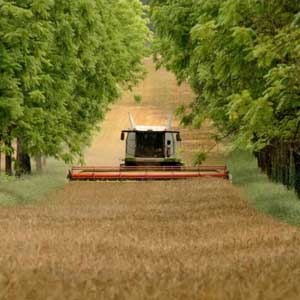To sustain: to cause or allow something to continue, to keep alive.
Sustainability is everybody’s favorite word these days. Everything is either organic or sustainable. When something is being used for marketing as much as this word these days, one has to wonder.
What does the word actually mean?
To break things down let’s start by defining what sustainability is.
This is the official definition from the UN: “sustainable development is development that meets the needs of the present without compromising the ability of future generations to meet their own needs.”
A number of questions immediately arise in my head and probably yours too.
How do we know what the needs of future generations are?
The short answer, we don´t.
But in this case we are assuming they at least need what we need right now in terms of natural resources. And that is another thing, we traditionally only look at nature in terms of a function or a natural resource.
What can we gain, win, take from nature in order to make our lives well, easier.
What can we take from nature to give us a profit in the short run?
Let us take sustainability one step further. What if we grow with nature and in the process create more than what was previously there?
Lets take an example – a normal forest. We plant trees, wait 80 years, and clear cut them for profit and plant trees again. This can also be applied to our farming practices nowadays, with a turnaround each year instead.
How can we change our minds and look at and live alongside nature in a completely new way?
Not for us to be used and to tame, but to create a chance to literally grow and learn together. I will now introduce a concept of co-creating, more commonly known as permaculture.
Permaculture has been around since the mid 60´s and although it has traveled the world in certain circles it is not necessarily widely known by the public.
First, lets bring everything back to basics.
What do we truly need? We need shelter, water, heat and food, possibly also clothing.
These are our basic needs in order to sustain ourselves.
Now, how do we allow ourselves to have these necessary cornerstones without depleting the earth? That is the very simple question which needs to be answered in order for us to move into a better direction. A direction in which we as a species can survive and thrive.
Alongside ourselves, we also need the earth and all the other beings (read plants, animals etc) to survive and thrive. We are all in this together.
We all know the problem we are facing as a species by now, so let us bring ourselves to the solution.
We will start using a scale that we all can relate to, our house, but this can be applied to the urban planning of whole cities as well.
Imagine this: a development which is adapted to the local conditions in which you live.
A house that has the perfect conditions in terms of sunlight, wind and a roof which also collect rainfall.
In these dwellings, a design of the proportion of the spaces would be performed in order for it to be as energy efficient as possible. Of course the materials in your house will be natural and the whole house will have the ability to breathe.
The sun conditions in your region will determine the shape and the angle of the roof as well as the positioning and size of the windows.
The rooms would be planned for your needs as well as the flow of how you actually will use it on a daily and seasonal basis.
The wet spaces would be collected in one corner of the house for efficiency. As you enter into your kitchen from the outside, there will be plenty of space for storing dried and fermented foods from your garden.
As an extension of the house, there will be a herb garden, which allows for fresh herbs any time of year. The rest of your garden is built up to supply you with an endless supply of food. This garden does not need to be trimmed or maintained in the regular way but rather observed and adjusted as it grows.
A food forest.
Your shelter thus has everything that you need – roof, collection of water, energy efficiency, and food. Does this sound complicated or far fetched?
It actually is not. All of this is knowledge which can easily be applied. If all of our needs are supplied in this one dwelling, what can be more sustainable living than that?
The most difficult part? Community building. Cooperating with people is infinitely more difficult than creating regenerative buildings. That is for another article however.






